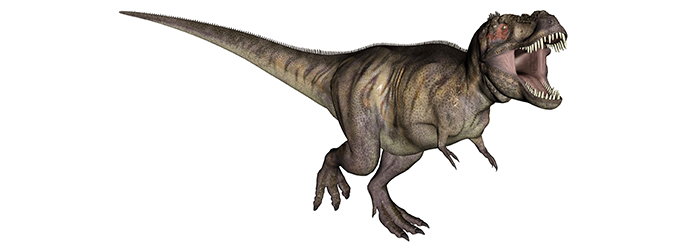by Tim Clarey, Ph.D., and Jeffrey Tomkins, Ph.D. *
A recent report, published in Nature,1 on the genome sequence of the so-called living fish fossil, the African coelacanth, has some evolutionists scrambling to defend their story. This is because the coelacanth's DNA is similar to other types of fish and not land animals, thus forcing the evolutionists to postulate that the coelacanth evolved slowly.1
Although modern coelacanths are found in water about 500 feet deep, Axel Meyer, a member of the study team believes that ancient coelacanths may have lived in shallow water, stating, "Other coelacanths lived in more shallow, estuary-like environments 400 million years ago, and you can envisage them using fins more like walking legs."2 In the overall evolutionary scenario, fish are believed to have transitioned to land and then continued evolving into amphibians and eventually into other land creatures.
The ancestral lineage of the coelacanth was thought to have gone extinct 70 million years ago, during the Cretaceous Period—an era most famous for the presence of dinosaurs. In other words, there are no known fossils of this fish in subsequent, younger sedimentary units. Therefore, finding a living coelacanth in 1938 off the east coast of Africa created quite a shock among scientists. This placed the coelacanth in the "living fossil" category, as an example of an organism thought to be extinct, and yet found living today virtually unchanged.
Only 309 individual occurrences of a live coelacanth have been recorded since it was first identified in 1938.1 Studies of modern specimens have taught scientists a lot about this unique fish. A French team found that coelacanths possess a swim bladder filled with oil, giving it neutral buoyancy between the depths of 600-900 feet.3 Many sharks use a similar type of system that allows them to swim freely without having to exert energy to keep from sinking or rising.
Studies of the coelacanth's eye have also shown it to have vision perfectly suited for the dark depths between 300-600 feet, rather than eyes more appropriate for light in shallow water.3 Direct eyewitness evidence from fisherman and deep-sea submersibles have placed the fish living between depths of 450-600 feet.3
So, evidence from the fish's swim bladder and eye structure, as well as fisherman reports and direct underwater observance all show that the coelacanth lives at depths of about 500 feet below the surface. A deep sea environment that it is uniquely designed to inhabit.
The coelacanth has long been hailed as an ancestor to amphibians and other tetrapods as their lineage goes back a supposed 300 million years.1 However, the exact origin of coelacanths has never been established by evolutionary scientists, the fish just seem to appear in the rocks "suddenly" like most all fossil organisms.4 And modern coelacanths were also found to give birth to live young (like some sharks), unlike their supposed descendants, the amphibians.3
The substantial evidence is stacking up. Modern coelacanths were designed to live in deep water, they do not lay eggs like amphibians, and they have DNA that is clearly fish like.
It's a good thing paleontologists didn't lead the search for the coelacanth as they would have no doubt set their fishing lines in water far too shallow. Clearly the coelacanth is a uniquely designed fish engineered by the Creator to live in deep water, and not a predecessor to some fictional crawling creature that decided to transition from shallow water to land.
References
- Amemiya, C.T., et al. 2013. The African coelacanth genome provides insights into tetrapod evolution. Nature. 496 (7445): 311- 316.
- Wade, N. Fish's DNA May Explain How Fins Turned to Feet. Posted on nytimes.com April 17, 2013, accessed April 18, 2013.
- Thomson, K.S. 1991. Living Fossil. New York, NY: W.W. Norton and Company, 137-144.
- Carroll, R. L. 1988. Vertebrate Paleontology and Evolution. New York, NY: W.H. Freeman and Company, 147-148.
* Dr. Clarey is Research Associate at the Institute for Creation Research and received his Ph.D. in geology from Western Michigan University. Dr. Tomkins is Research Associate at the Institute for Creation Research and received his Ph.D. in Genetics from Clemson University.
Article posted on April 29, 2013.










